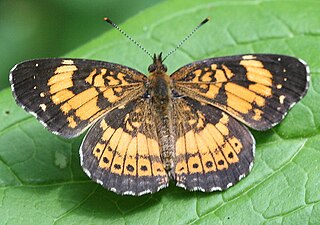
Chlosyne nycteis, the silvery checkerspot, is a species of Nymphalinae butterfly that occurs in North America. It is listed as a species of special concern in Connecticut and Maine, and is believed extirpated in Connecticut, Massachusetts, and New Hampshire.

Chlosyne is a genus of butterflies from North and South America in the family Nymphalidae.
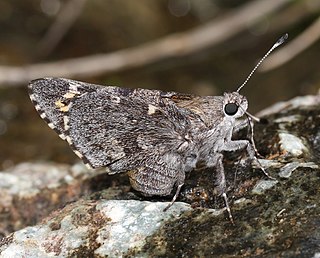
Agathymus aryxna, the Arizona giant skipper, is a butterfly in the family Hesperiidae described by Harrison Gray Dyar Jr. in 1905. Its range includes Central and North America.
Sphingicampa bisecta, the bisected honey locust moth, is a species of moth in the family Saturniidae. The species was described by Joseph Albert Lintner in 1879. It is found in North America.
Speyeria carolae, or Carole's fritillary, is a butterfly in the family Nymphalidae. It was described by Cyril Franklin dos Passos and Lionel Paul Grey in 1942 and is found in North America, where it has only been recorded from the Charleston Mountains of Clark County, Nevada. The habitat consists of mountain slopes, foothills and forest openings.

Eunica monima, the dingy purplewing, is a species of tropical brushfoot in the family Nymphalidae, and was described by Caspar Stoll in 1782. It is found in North America.
Atrytonopsis pittacus, the white-barred skipper, is a species of grass skipper in the family Hesperiidae. It was described by William Henry Edwards in 1882 and is found in Central and North America.
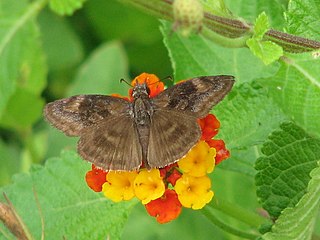
Gesta invisus, the false duskywing, is a species of spread-wing skipper in the family Hesperiidae. It was described by Arthur Gardiner Butler and Herbert Druce in 1872 and is found in Central and North America.
Agathymus baueri, or Bauer's giant-skipper, is a species of giant skipper in the family Hesperiidae. It is found in North America.

Euphilotes enoptes, the dotted blue, is a species of blue (Polyommatinae) butterfly in the family Lycaenidae. It is found in North America.

Cyllopsis pyracmon, or Nabokov's satyr, is a species of alpine, arctic, nymph, or satyr in the family Nymphalidae. It is found in North America.

Lon taxiles, the taxiles skipper, is a species of grass skipper in the family Hesperiidae. It is found in Central America and North America.
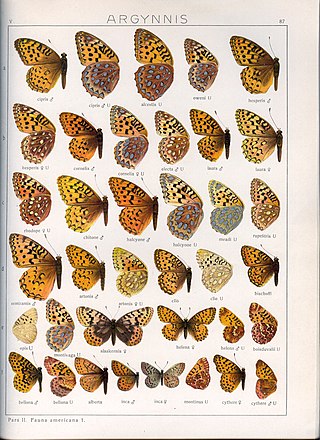
Boloria alaskensis, the mountain fritillary or Alaskan fritillary, is a species of fritillary butterfly in the family Nymphalidae. It was described by William Jacob Holland in 1900 and is found in North America and North European Russia. The MONA or Hodges number for Boloria alaskensis is 4462. The larvae feed on false bistort and alpine smartweed.

Agathymus alliae, the Mojave giant skipper, is a species of giant skipper in the family Hesperiidae. It is found in North America.
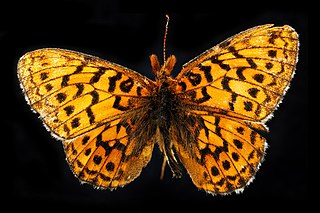
Boloria kriemhild, the relict fritillary, is a species of fritillary butterfly in the family Nymphalidae. It is found in North America.
Chlosyne endeis, known generally as the banded checkerspot or banded patch, is a species of crescents, checkerspots, anglewings, etc. in the butterfly family Nymphalidae. It is found in North America.
Chlosyne cyneas, the black checkerspot, is a species of crescents, checkerspots, anglewings, etc. in the butterfly family Nymphalidae.
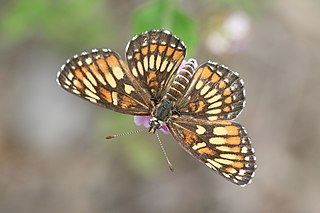
Chlosyne theona, the theona checkerspot, is a species checkerspots in the butterfly family Nymphalidae found in North America. The MONA or Hodges number for C. theona is 4508.
Chlosyne melitaeoides, the red-spotted patch, is a species of crescents, checkerspots, anglewings, etc. in the butterfly family Nymphalidae.











